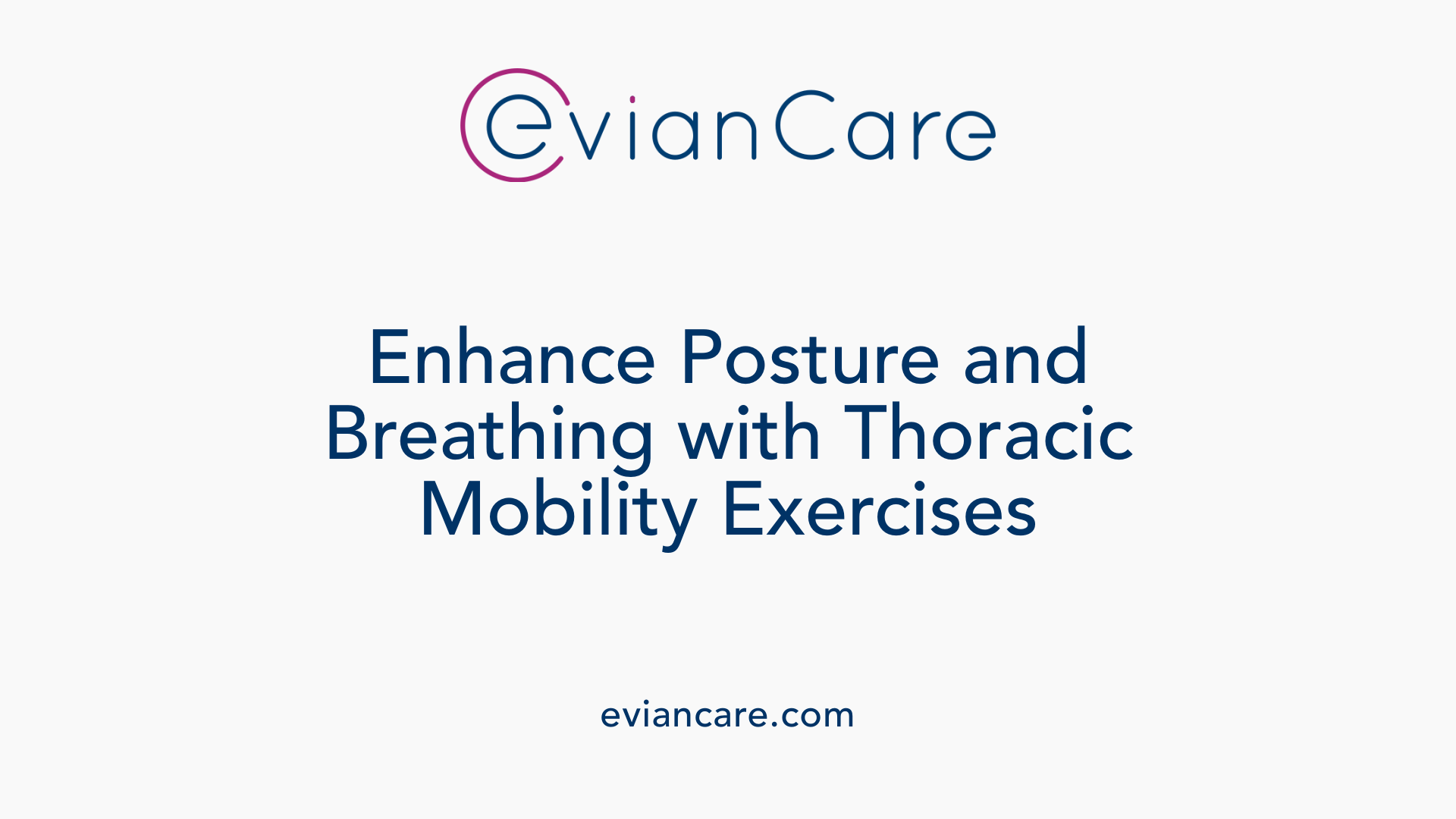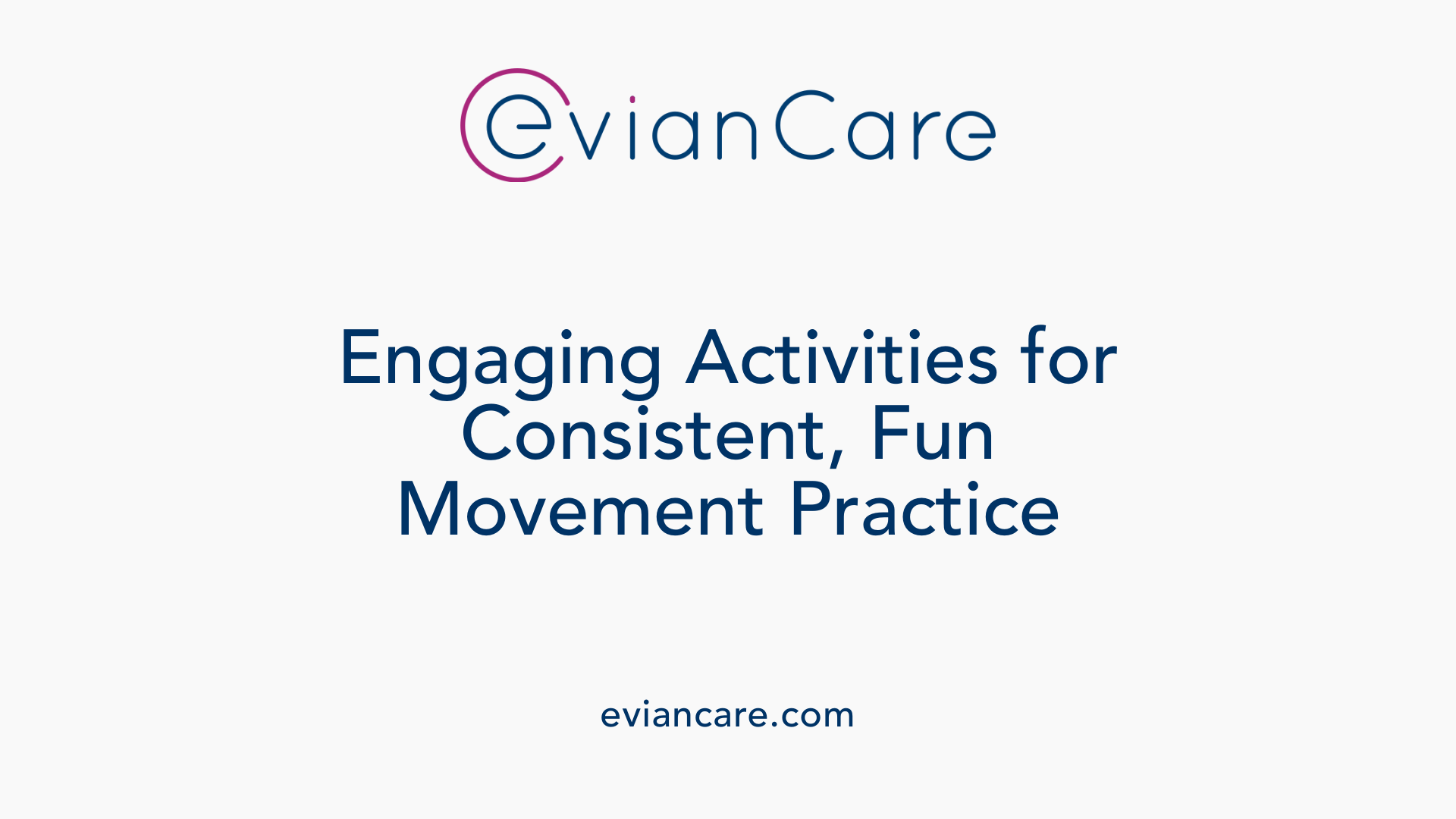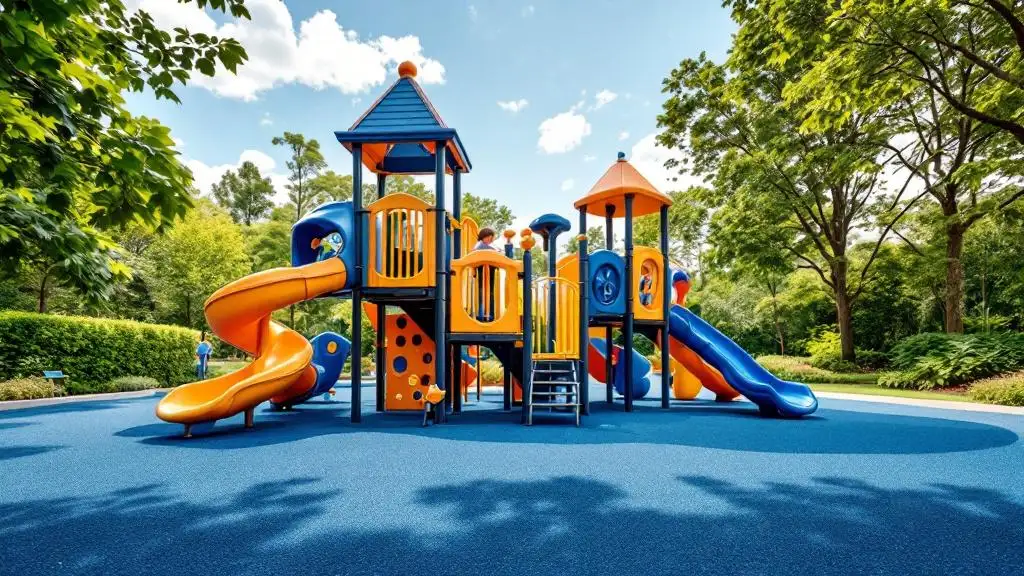
Understanding the Importance of Physical Therapy for Children with Mobility Limitations
Physical therapy plays a vital role in helping children with limited range of motion (ROM) improve their functional abilities, increase strength, and achieve developmental milestones. Tailored, engaging exercises not only promote mobility but also enhance overall quality of life by fostering independence and social participation. This comprehensive approach involves various techniques, routines, and activities designed to address specific needs, whether due to neurological conditions, developmental delays, or musculoskeletal challenges.
Goals and Benefits of Pediatric Physiotherapy Exercises

What are the benefits and goals of physical therapy exercises for children with mobility challenges?
Pediatric physical therapy exercises are designed to foster important developmental and functional gains in children facing movement difficulties. One of the primary objectives is the improvement of gross motor skills and strength. Activities such as crawling, standing, and walking enhance muscle power, stability, and coordination, enabling children to perform daily tasks with greater independence.
Flexibility and balance are also critical components targeted by pediatric exercises. Stretching routines, balance games, and obstacle courses help children develop ease of joint movement and improve their ability to maintain stability during activities. Such improvements reduce the risk of falls and support overall mobility.
Preventing deformities and alleviating pain are vital goals, especially for children with neuromuscular conditions like cerebral palsy or Down syndrome. Early interventions incorporating tailored stretches, strengthening, and positioning exercises can reduce contractures, joint stiffness, and discomfort.
These exercises are particularly beneficial for complex conditions, offering strategies that target specific needs such as gait training, core stabilization, and sensory integration. For example, gait exercises train children to walk more efficiently, while core workouts improve trunk stability.
Additionally, physical therapy supports emotional well-being and social interaction. As children gain confidence through fun, engaging activities like obstacle courses, balloon games, and swimming, they are more likely to participate actively in social play.
Overall, the goals extend beyond mere movement. They encompass promoting confidence, fostering socialization, and encouraging an active lifestyle. Early, personalized intervention not only addresses immediate mobility challenges but also helps maximize long-term functional outcomes and improve the child's quality of life.
Range of Motion Exercises and Their Role in Pediatric Therapy
What are some physical therapy exercises for children with limited range of motion?
Children with limited joint mobility benefit from a variety of targeted exercises aimed at improving flexibility and muscle function. These typically include gentle stretching routines and both active and passive range of motion activities.
Passive range of motion exercises involve movement of the joints by a therapist or caregiver without the child's active muscle engagement. These are especially important for children with severe mobility impairments, helping to reduce joint stiffness, promote circulation, and prevent joint contractures.
Active range of motion exercises encourage children to move their joints themselves, fostering independence and muscle control. Activities such as neck rotations, shoulder rolls, wrist circles, and leg stretches are common.
To motivate children, therapists often incorporate engaging activities into therapy sessions. For example, obstacle courses like crawling over cushions, balloon volleyball, pretend play with toys, sensory exploration with textured bins, and water-based activities such as swimming can make exercises enjoyable.
Core stabilization exercises like bridging, planks, and animal walks support posture and overall strength, contributing to better mobility and stability.
Balance activities, including standing on one leg, walking on a balance beam, or navigating obstacle courses, help improve coordination and proprioception.
Additionally, therapy may incorporate adaptive sports, swimming, or use of therapy balls to build strength in a fun and low-impact manner.
It’s essential that these exercises be personalized to each child's specific needs and abilities. A pediatric physical therapist evaluates the child's condition and designs a safe, effective exercise program. Consistent practice, usually multiple times daily, yields the best results, with exercises tailored to challenge the child's current movement levels while encouraging gradual progress.
In summary, joint mobility in children can be effectively supported through a combination of stretching, active and passive movements, and playful activities that develop coordination, strength, and flexibility. Proper supervision and tailored programs ensure safe and meaningful improvements in mobility.
Specialized Exercises for Children with Specific Conditions

What treatment options utilize physical therapy exercises for conditions like hypotonia and cerebral palsy?
Children with neurological or neuromuscular conditions such as hypotonia and cerebral palsy benefit significantly from specific physical therapy exercises. These tailored activities aim to improve muscle tone, enhance motor skills, and promote better posture and coordination.
For hypotonia, exercises focus on strengthening core stability and increasing muscle activation. Common activities include crawling on various surfaces, pulling to stand from sitting, squatting to lift objects, and navigating obstacle courses. These activities help stimulate muscle groups affected by low tone and improve overall motor efficiency.
Children with cerebral palsy often undergo range of motion exercises, balance training, and gait improvement routines. These include active and passive stretching, use of therapy balls, obstacle courses, and resistance exercises with Therabands to build strength in specific muscle groups. Aquatic therapy may also be used to reduce joint stress while promoting movement.
Early intervention with comprehensive plans involving family participation, orthotic assistance, and functional activities encourages progress. Combining physical therapy with occupational and speech therapies can further support developmental gains.
Therapists frequently incorporate play-based activities such as balloon volleyball, pretend play, and obstacle navigation to make therapy engaging. This holistic, multidisciplinary approach maximizes children’s mobility, independence, and quality of life.
What are some specific exercises for managing hypotonia and cerebral palsy?
| Exercise Type | Example Activities | Benefits |
|---|---|---|
| Core strengthening | Planks, bridges, sitting on therapy ball | Improve trunk stability and support posture |
| Range of motion | Neck rotations, arm circles | Maintain joint flexibility and reduce stiffness |
| Mobility and balance | Walking on different textured surfaces, obstacle courses | Enhance coordination, support walking and balance abilities |
| Functional activities | Squatting, pulling to stand, climbing | Develop practical movement skills, improve strength |
| Aquatic exercises | Swimming, water walking | Promote movement with reduced joint impact |
Addressing specific needs with customized exercises ensures optimal benefits and promotes confident movement development in children facing these conditions.
Improving Thoracic Spine Mobility

What are common issues affecting thoracic mobility in children?
Many children experience limited thoracic spine mobility due to prolonged sitting, poor posture, or musculoskeletal conditions like scoliosis. This restriction can lead to compensatory movements in the lumbar or cervical spine, causing back pain or affecting overall posture. Additionally, limited thoracic flexibility can reduce the child's ability to perform optimal movement patterns, impacting activities such as reaching or playing.
Children with developmental delays or certain conditions like autism may also exhibit poor trunk control, further restricting thoracic movement. Addressing these issues early can prevent secondary problems and support more effective coordination and breathing.
What exercises can help improve thoracic flexibility?
Several exercises can enhance thoracic mobility in children:
- Cat-Cow Stretch: Promotes spine extension and flexion, increasing flexibility.
- Foam Roller Thoracic Extension: Using a foam roller placed across the back to gently stretch the thoracic region.
- Child’s Pose with Side Stretch: Encourages lateral flexibility and elongates the spine.
- Wall Angels: Standing against a wall, moving arms up and down to improve shoulder and upper back mobility.
Incorporating these routines regularly helps maintain joint looseness and muscle flexibility. Using tools like foam rollers or small resistance bands can make exercises more effective.
How can thoracic mobility exercises be integrated into functional activities?
Progressing from isolated stretches to functional movements is essential. Activities such as reaching during play, catching balls, or climbing can naturally incorporate thoracic mobility.
Therapists often pair stretching routines with core strengthening exercises and play-based therapy to enhance integration. For example, reaching overhead during obstacle courses or overhead climbing can reinforce mobility improvements.
Progression involves gradually increasing the complexity and range of movement, always ensuring exercises are safe and suited to the child's capacity. Consistent practice, along with encouragement and engagement, helps sustain gains in thoracic flexibility.
| Activity | Purpose | Notes |
|---|---|---|
| Cat-Cow Stretch | Flexibility in thoracic spine | Perform slowly, several reps |
| Foam Roller Thoracic Extension | Increase extension range | Use a foam roller placed horizontally |
| Child’s Pose with Side Stretch | Lateral flexibility | Gently hold stretches |
| Wall Angels | Improve shoulder, back mobility | Slide arms smoothly within range |
Proper technique and regular exercises can significantly improve posture, movement, and breathing in children, making daily activities easier and more comfortable.
Evidence-Based Practices in Pediatric Physical Therapy

What evidence-based practices guide pediatric physical therapy for mobility and strength development?
Pediatric physical therapy relies on research-supported methods tailored to each child's specific needs. Thorough assessment tools such as the General Movements Assessment (GMA) and the Alberta Infant Motor Scale (AIMS) help therapists understand a child's motor abilities and developmental progress.
Following assessment, therapists set personalized goals focused on improving mobility, strength, and functional independence. They use intervention strategies grounded in current evidence, including different neurodevelopmental and sensory-motor techniques.
Interventions often incorporate functional activities that promote motor control, such as crawling, standing, and balance exercises. These activities can be combined with playful tasks like obstacle courses, balloon games, and resistance exercises with Therabands to make therapy engaging.
Technological advances and neuroplasticity principles guide therapy approaches, especially for children with neurological conditions like cerebral palsy or developmental delays. Sensory integration strategies enhance coordination, balance, and muscle activation.
Guidelines from professional organizations, such as the American Physical Therapy Association (APTA), emphasize the importance of caregiver training, repeated practice, and functional goal achievement.
Incorporating evidence into practice reduces unnecessary variation and optimizes treatment outcomes. Continuous research efforts help refine these methods, ensuring children receive effective, goal-focused therapy aligned with the latest scientific insights.
| Assessment Tools | Therapy Approaches | Supporting Technologies |
|---|---|---|
| GMA, AIMS | Motor control exercises | Neuroplasticity principles |
| Developmental scales | Sensory integration | Balance and strength devices |
| Family-centered evaluations | Functional activity training | Treadmill gait training |
| Outcome measures | Resistance and core strength exercises | Adaptive sports equipment |
This comprehensive, evidence-based approach ensures that pediatric physical therapy effectively supports children’s mobility and strength development, fostering their independence and quality of life.
Implementing Exercise Routines at Home and in Therapy Settings

How can parents, caregivers, and professionals effectively implement exercise routines for children with mobility issues?
Implementing exercise routines for children with mobility challenges requires a collaborative and personalized approach. Parents, caregivers, and health professionals should focus on creating activities that are both engaging and suitable for the child's specific developmental and physical needs. Pediatric physical therapists are instrumental in this process by demonstrating exercises, providing guidance on proper techniques, and adapting routines to match the child's abilities.
In practice, incorporating fun activities like animal walks, obstacle courses, balloon games, or sensory play encourages children to participate actively. These activities help strengthen muscles, improve balance, and promote motor skills while keeping children motivated. Routine consistency is vital; integrating exercises into daily playtime helps children develop mobility and independence naturally.
Safety is a primary concern. Caregivers should be trained to perform exercises correctly, observe for signs of fatigue or discomfort, and modify activities as needed. Monitoring progress regularly and adjusting routines accordingly ensures ongoing development and prevents setbacks. Overall, combining evidence-based techniques with a playful, supportive environment empowers children to improve their functional abilities, leading to better quality of life and greater participation in everyday activities.
Physical Therapy for Specific Conditions and Developmental Support
Why is early intervention important in pediatric physical therapy?
Early intervention plays a crucial role in helping children with movement difficulties, developmental delays, or neurological conditions like hypotonia and cerebral palsy. Initiating therapy early can prevent secondary complications such as joint stiffness, muscle contractures, and delayed motor skills. It also promotes better developmental outcomes by supporting functional independence and improving the child's overall quality of life.
How do multidisciplinary approaches enhance treatment?
Effective management typically involves a team of health professionals, including physical therapists, occupational therapists, speech therapists, and pediatricians. This collaborative approach ensures comprehensive care, addressing all aspects of a child's development. Physical therapy exercises are tailored to improve muscle strength, coordination, and mobility, while also integrating strategies for speech, sensory processing, and daily activities.
What are some therapeutic activities that support developmental milestones?
Children benefit from engaging, fun exercises designed to promote motor skills and balance. Activities like obstacle courses, animal walks, balloon volleyball, and swimming help develop coordination, strength, and sensory processing. Play-based therapies not only foster motor development but also boost motivation and social participation.
How are exercises used to support children with hypotonia and cerebral palsy?
For children with hypotonia, therapy focuses on strengthening core muscles, improving posture, and enhancing stability through activities such as crawling on different surfaces, pulling to stand, and squatting. For those with cerebral palsy, range of motion exercises, gait training, and balance activities—like standing on one leg or using therapy balls—are common.
Specific exercise examples include:
- Crawling across various terrains
- Pushing to stand from different positions
- Squatting and returning to standing
- Navigating obstacle courses and climbing
- Using resistance bands for targeted muscle strengthening
Incorporating therapy into daily routines
Therapists often recommend integrating these exercises into playful, engaging activities. This makes therapy enjoyable and encourages consistent practice at home. Techniques like resistance in tummy time, animal walks, and balance games help build strength, coordination, and confidence.
| Exercise Type | Example Activities | Benefits | Frequency and Tips |
|---|---|---|---|
| Core & Balance | Animal walks, therapy ball routines | Improve stability and trunk control | Multiple times daily, gently and smoothly |
| Range of Motion | Neck rotations, stretches | Prevent joint stiffness | At least twice daily, pain-free |
| Gait & Mobility | Tall kneeling, treadmill walking | Enhance walking ability | Under supervision, with safety precautions |
| Strength Training | Squats, resistance crawling | Build muscle power | Repeated sets, focusing on form |
Engaging activities like obstacle courses, swimming, or adaptive sports motivate children while helping develop strength, coordination, and confidence. Combining physical therapy with play ensures children enjoy their journey toward improved movement and independence.
Promoting Developmental Progress Through Consistent Therapy
Early, tailored physical therapy exercises are essential for children with limited ROM to achieve meaningful improvements in mobility and function. Combining innovative techniques, engaging activities, and family involvement ensures that children not only enhance their motor skills but also build confidence and independence. Regular assessment, personalized routines, and evidence-based practices form the foundation for successful therapy outcomes, ultimately supporting children in leading active, healthier lives.
References
- 10+ Pediatric Physical Therapy Exercises & Activities
- 5 Physical Therapy Exercises for Low Muscle Tone (Hypotonia)
- Exercises for Kids with Cerebral Palsy: Fun Ways to Boost ...
- Exercises: Arms and Hands (Passive)
- Thoracic Mobility Exercises for Pediatric PT/OT
- 16 Pediatric Physical Therapy Techniques
- Best Pediatric Physical Therapy Exercises | Boost Strength
- Gait Training Exercises for Children: A Pediatric PT's Guide












